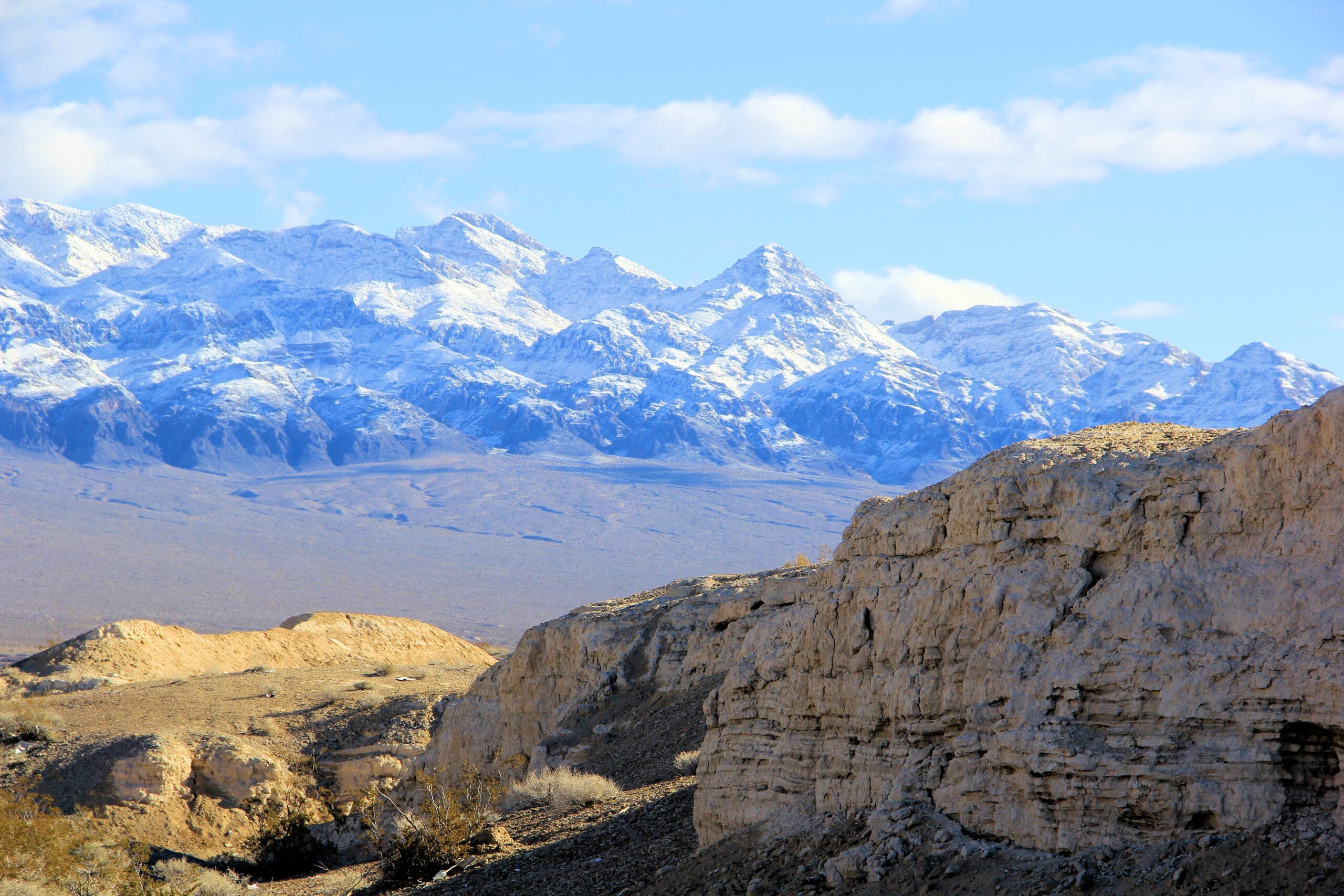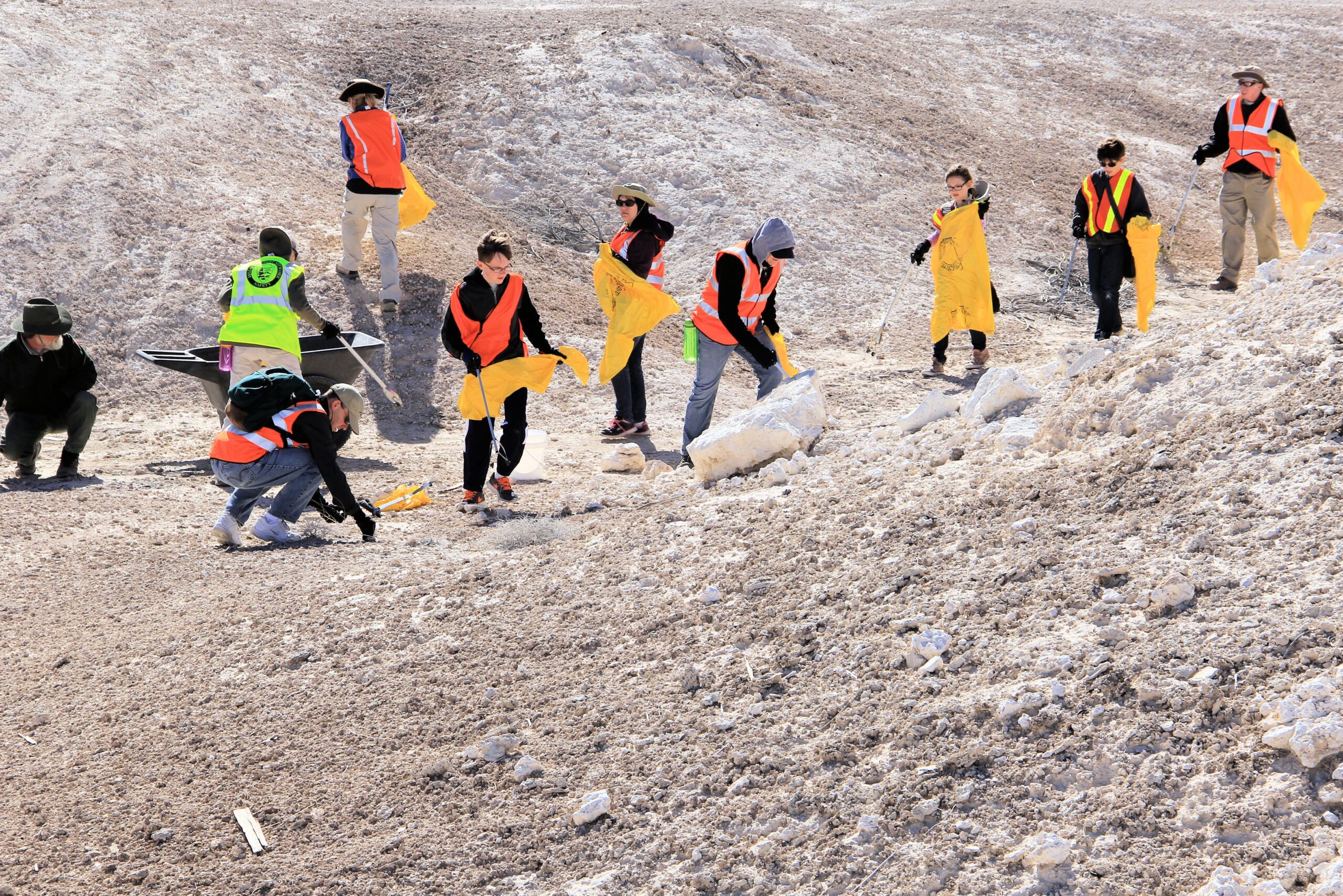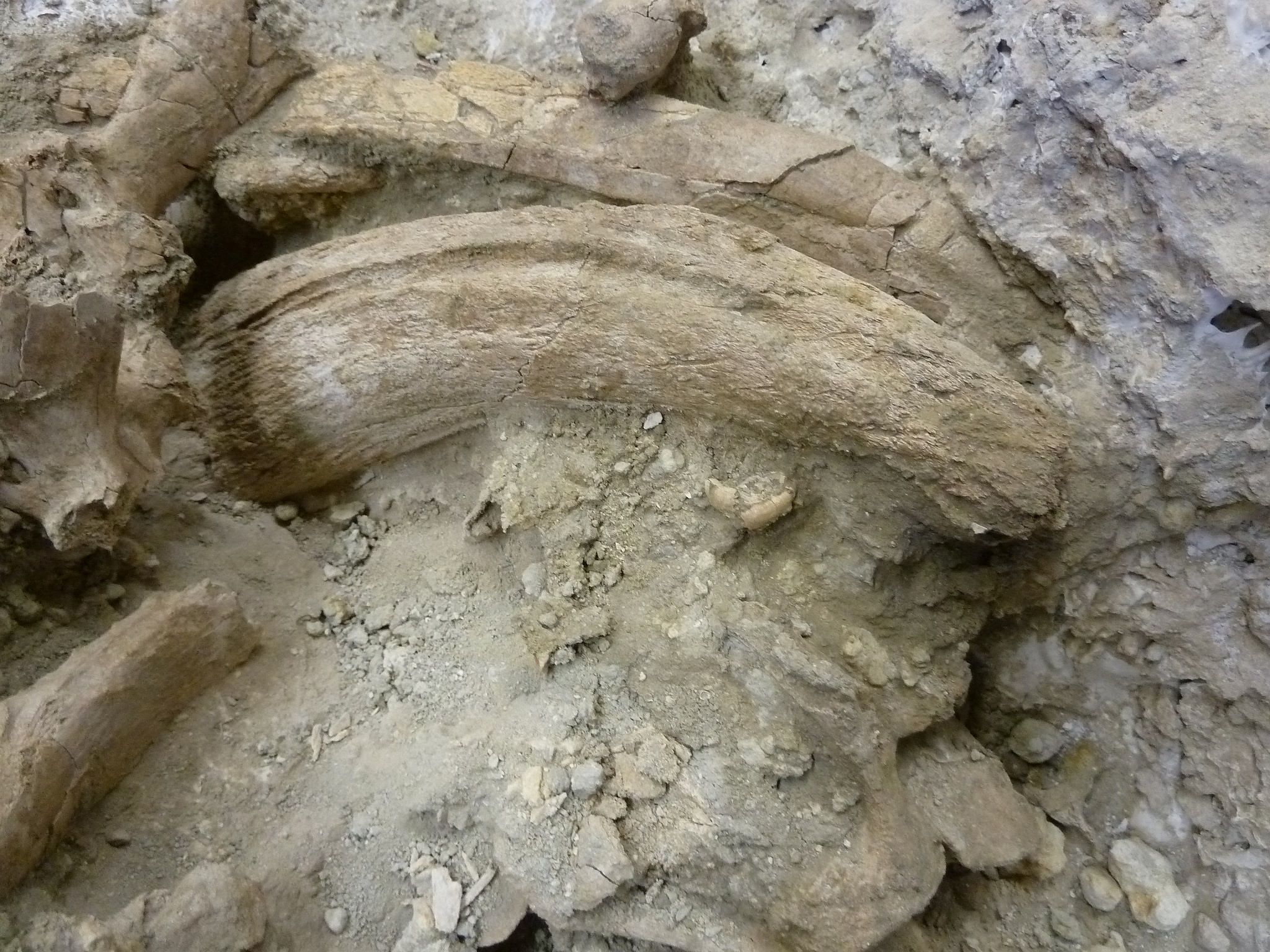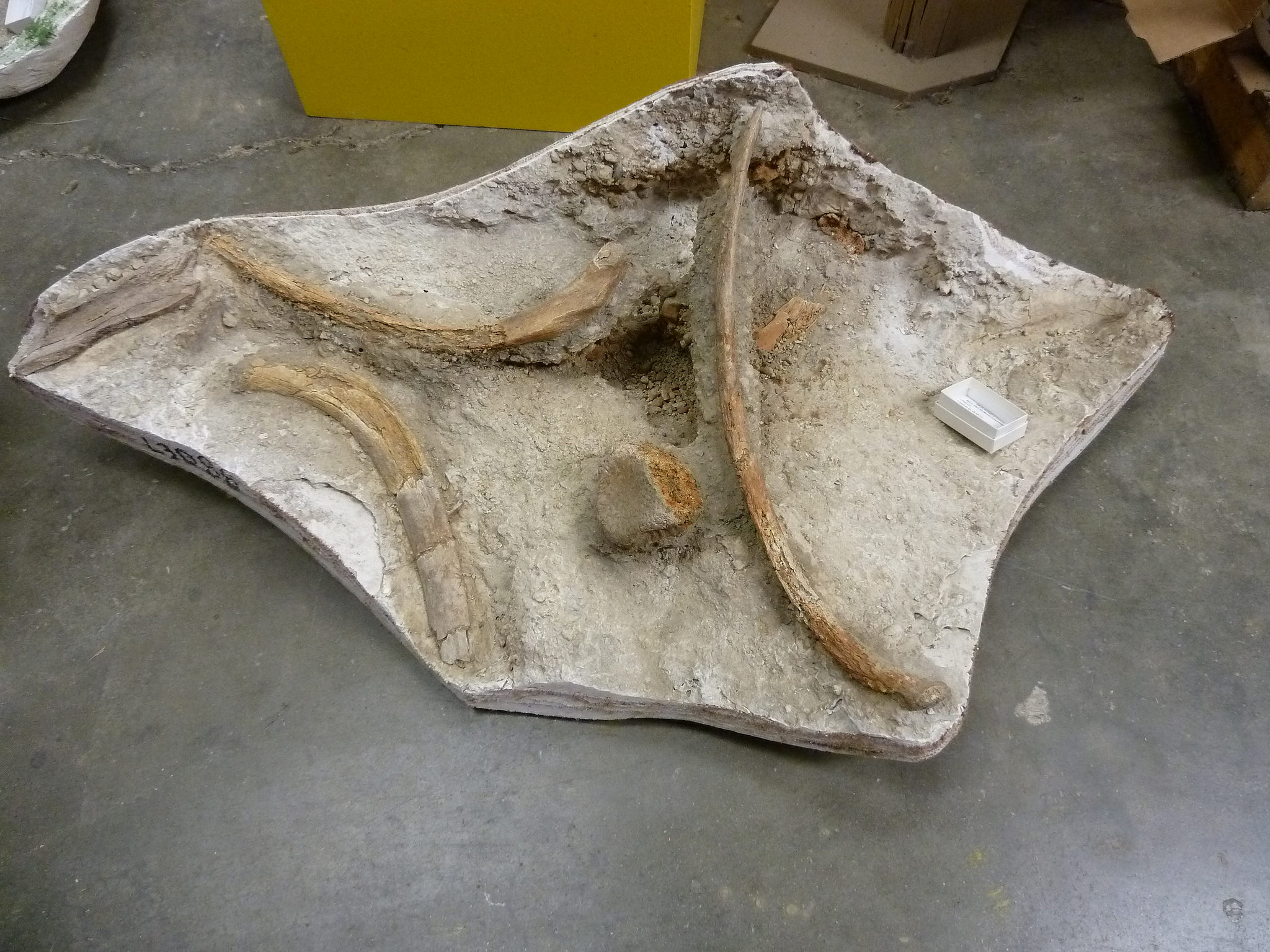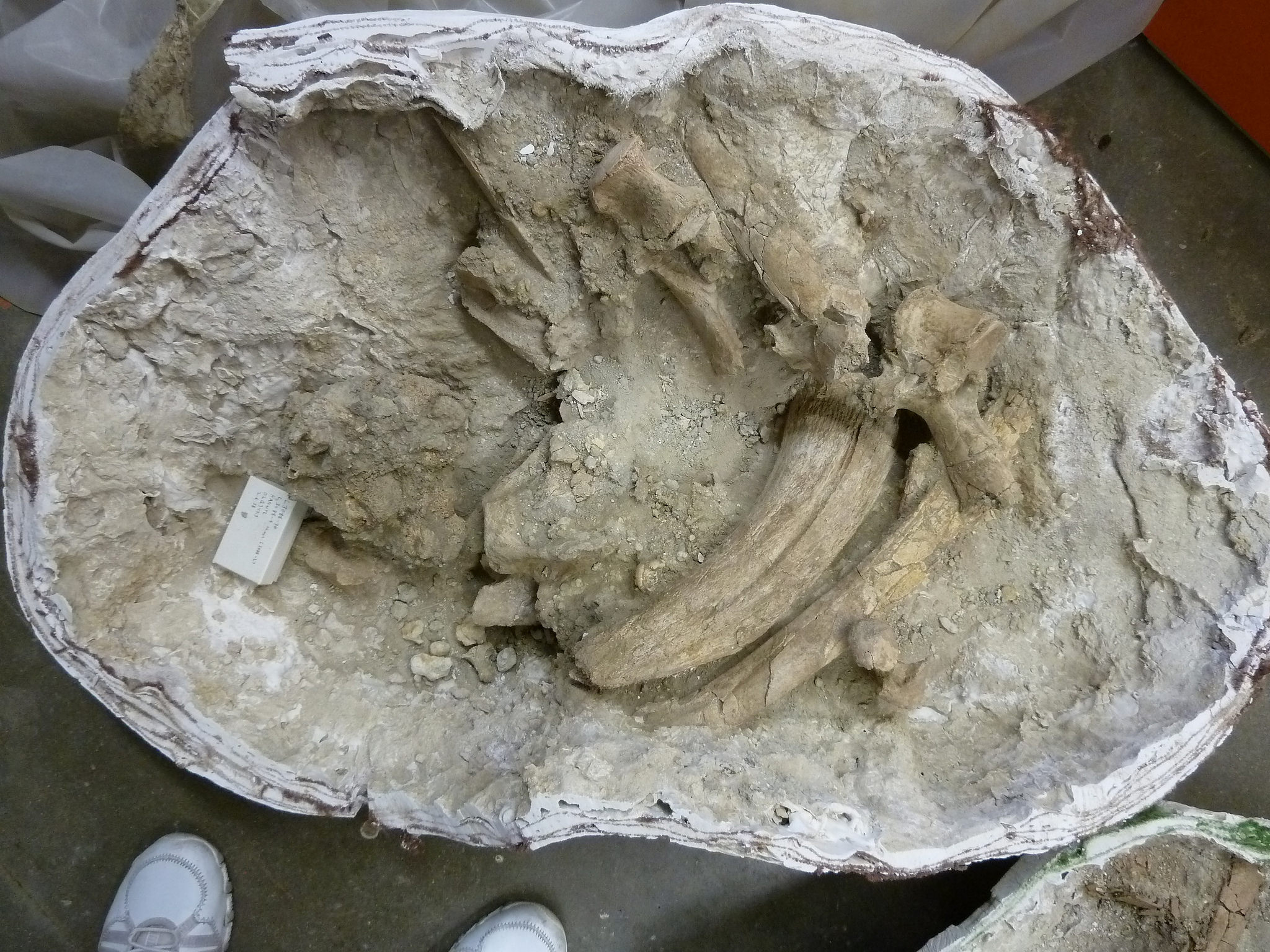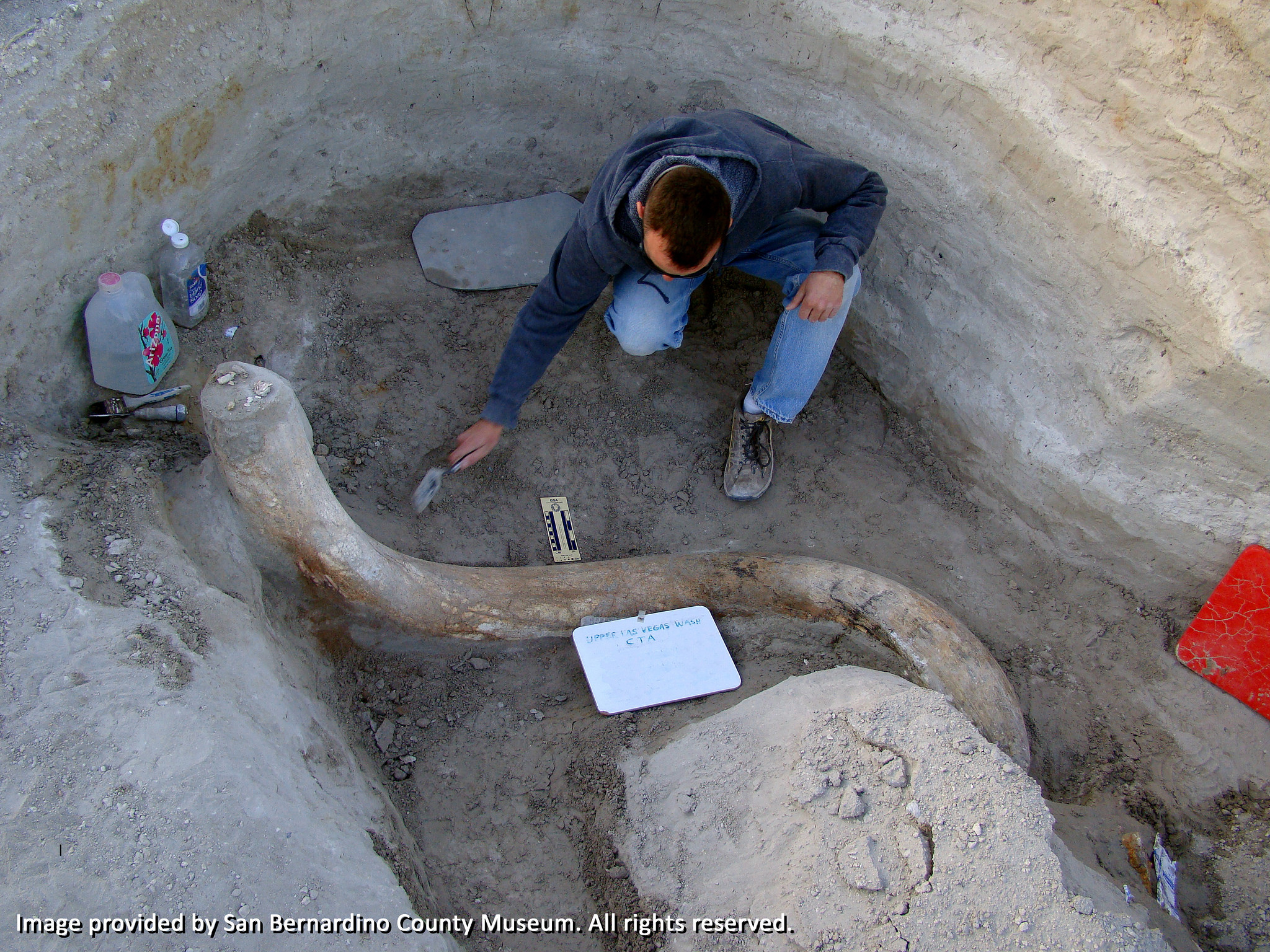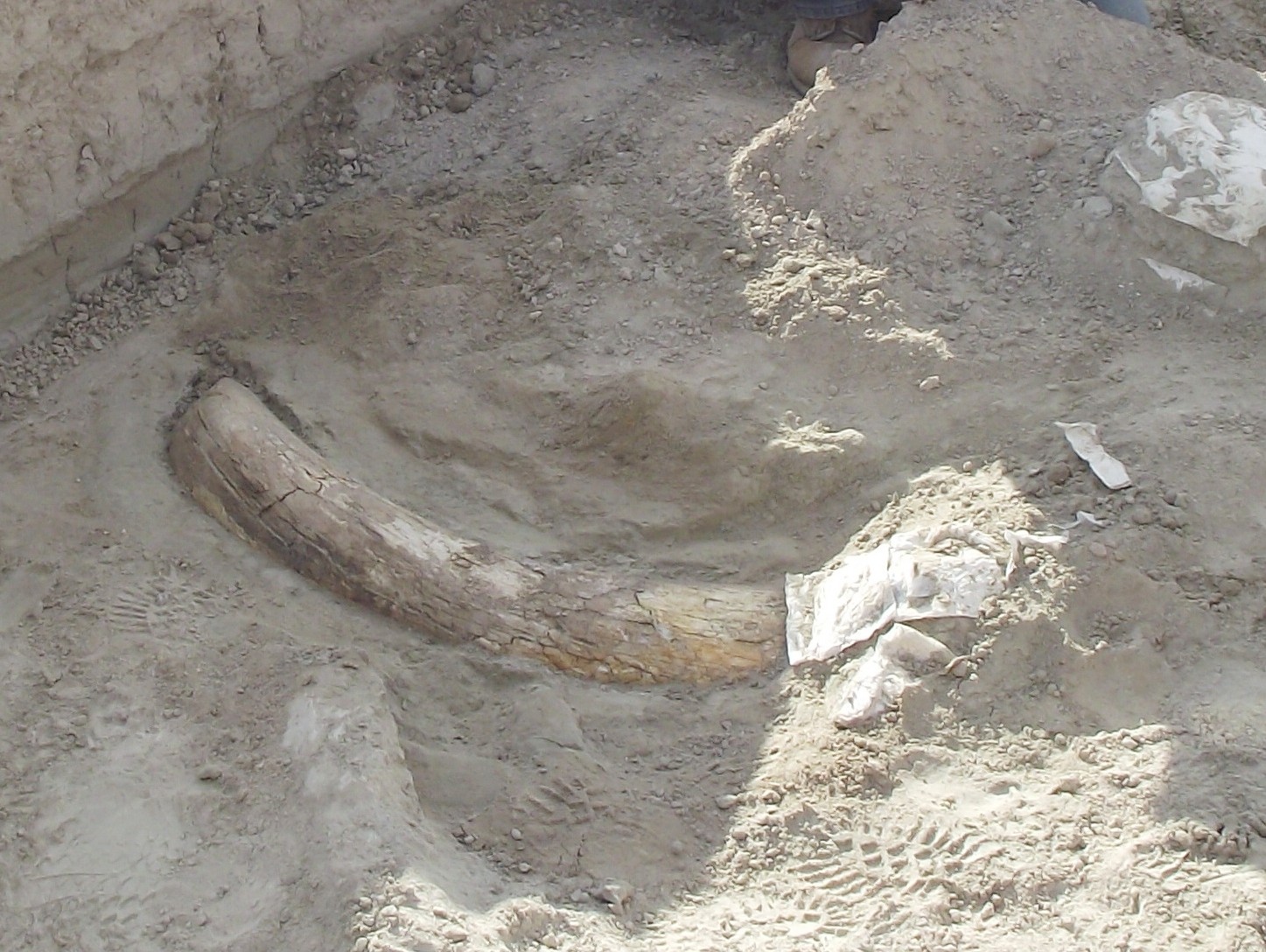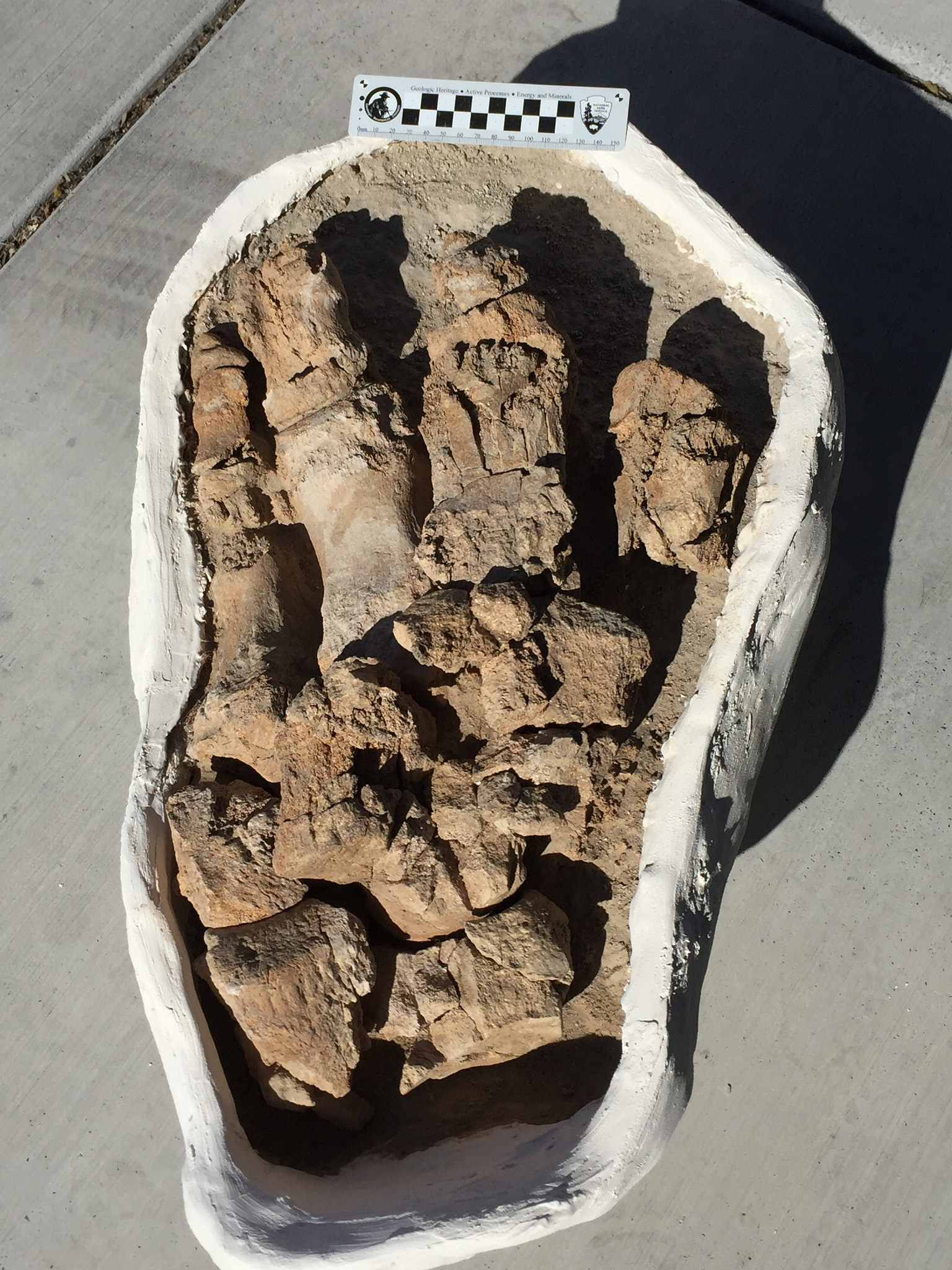What is Tule Springs?
About Tule Springs
Tule Springs is an area north of Las Vegas that contains Tule Springs Fossil Beds National Monument (or TUSK, the National Park System acronym) and Ice Age Fossils State Park. These Ice Age Fossil Beds contain the single largest assemblage of Ice Age fossils in the Southwest, spanning geologic history from 7,000 to 400,000 years past. It is a continuous record found nowhere else.
The area has been studied intermittently since the early 1900s. Most notably, a four-month intensive study in 1962-63 that was chronicled by National Geographic. The Tule Springs Expedition, later known as the “Big Dig,” catalogued hundredss of Ice Age fossils including Columbian mammoth, ground sloths, American lion, ancient camel, bison, a few ancient horse species and several species still alive today.
The primary geomorphological feature in the Tule Springs Fossil Beds is the Las Vegas Wash. That wash is the only drainage system in the Las Vegas Hydrologic Basin. All waters in the basin eventually flow to the wash and then into Lake Mead and the Colorado River.
The Tule Springs area supports four unique and imperiled species of plants and animals, including: the Las Vegas Buckwheat, Merriam’s Bear Poppy, Las Vegas Bear Poppy, Halfring Milkvetch and Desert Tortoise. It also provides important habitat for burrowing owls, kit foxes, coyotes, bobcats, rattlesnakes, desert iguanas, tarantulas, American kestrels, red-tailed hawks, golden eagles and a multitude of other wildlife species, some of which are recognized for protection under the Clark County Multiple Species Habitat Conservation Plan.
It’s no wonder that the Protectors of Tule Springs and our partners fought so hard to protect this important land!
Tule Springs is an area north of Las Vegas that contains Tule Springs Fossil Beds National Monument (or TUSK, the National Park System acronym) and Ice Age Fossils State Park. These Ice Age Fossil Beds contain the single largest assemblage of Ice Age fossils in the Southwest, spanning geologic history from 7,000 to 400,000 years past. It is a continuous record found nowhere else.
The area has been studied intermittently since the early 1900s. Most notably, a four-month intensive study in 1962-63 that was chronicled by National Geographic. The Tule Springs Expedition, later known as the “Big Dig,” catalogued hundredss of Ice Age fossils including Columbian mammoth, ground sloths, American lion, ancient camel, bison, a few ancient horse species and several species still alive today.
The primary geomorphological feature in the Tule Springs Fossil Beds is the Las Vegas Wash. That wash is the only drainage system in the Las Vegas Hydrologic Basin. All waters in the basin eventually flow to the wash and then into Lake Mead and the Colorado River.
The Tule Springs area supports four unique and imperiled species of plants and animals, including: the Las Vegas Buckwheat, Merriam’s Bear Poppy, Las Vegas Bear Poppy, Halfring Milkvetch and Desert Tortoise. It also provides important habitat for burrowing owls, kit foxes, coyotes, bobcats, rattlesnakes, desert iguanas, tarantulas, American kestrels, red-tailed hawks, golden eagles and a multitude of other wildlife species, some of which are recognized for protection under the Clark County Multiple Species Habitat Conservation Plan.
It’s no wonder that the Protectors of Tule Springs and our partners fought so hard to protect this important land!
Visit the Fossil Beds

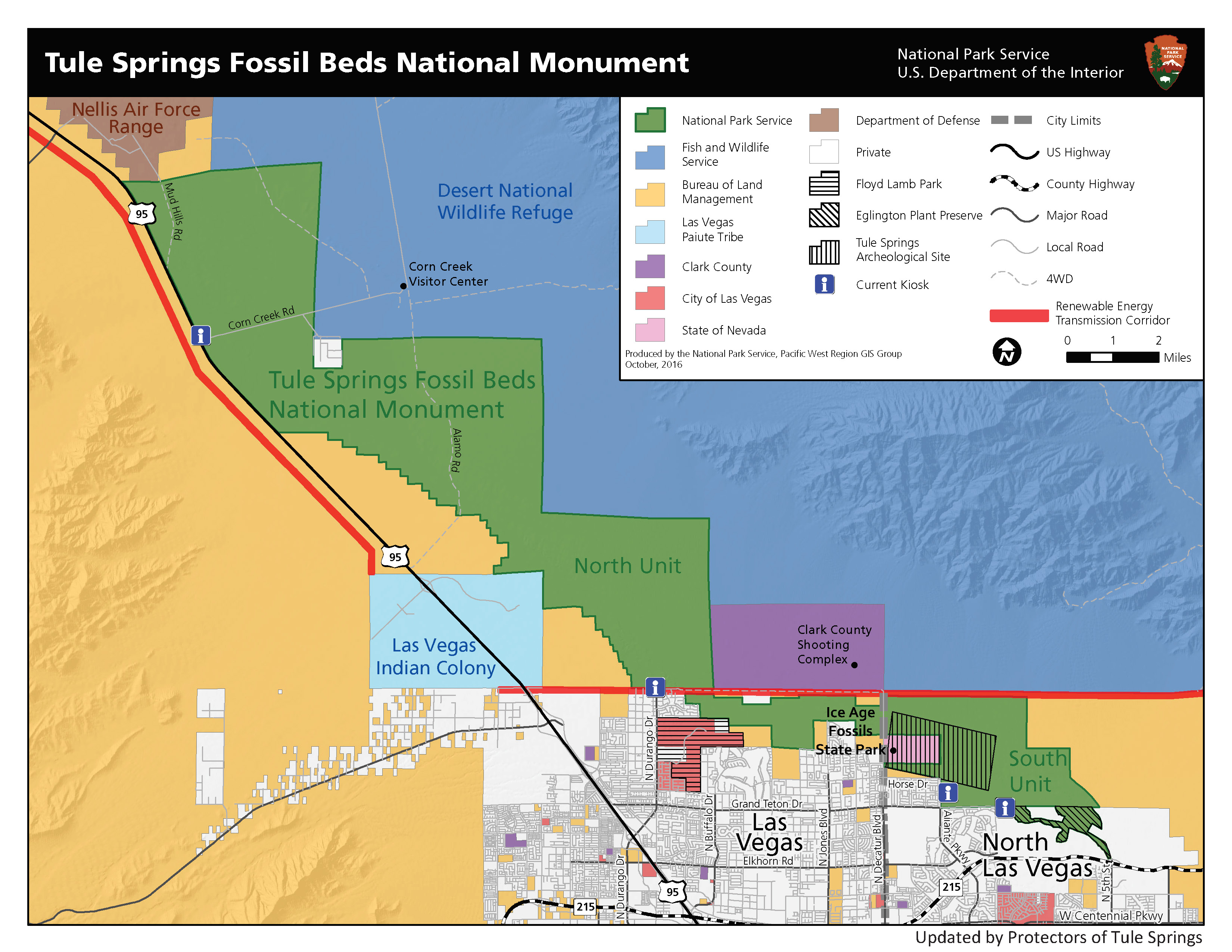
Tule Springs Fossil Beds National Monument is located within 30 minutes of the neon lights of Las Vegas, Nevada. As a new National Monument, the infrastructure will take time to develop, but there are lots of places you can explore on your own.
Protectors of Tule Springs has been leading interpretive hikes to areas both within the National Monument and State Park for several years. We now assist the National Park Service and Nevada State Parks as volunteers on scheduled hikes.
The first interpretive trail system is being developed near the urban core of North Las Vegas, which will provide an opportunity to Las Vegas residents and visitors to explore the State Park and the National Monument. These trails will introduce them to the unique geologic features, ecosystems, fossil deposits and the history of Tule Springs.
Both the National Monument and State Park are in early stages of development so there are no facilities and designated trails are limited but there is so much to explore. Visitors can access either park on foot to explore from dawn to dusk each day.
Within the Tule Springs Fossil Beds National Monument unit there are three interpretive kiosks which provide information about some of the resources visitors may see while exploring and they also serve as approved access points to the National Monument. They are located near the intersections of N. Durango Dr. and Moccasin Rd., N. Aliante Pkwy. and Moonlight Falls Ave., and after exiting US 95 on Corn Creek Rd. Aside from the kiosks, there is an informational display at the Desert National Wildlife Refuge Visitor Center on Corn Creek Rd. Currently within the National Monument there are no designated trails, facilities, or parking areas.
At Ice Age Fossils State Park construction has begun on a new state-of-the-art visitor center facility that will include an exhibit space featuring many of the fossils found throughout Tule Springs, a trail system introducing visitors to the Ice Age Fossil Beds and the permanent installation of the Monumental Mammoth sculpture. The park is on N. Decatur Blvd., across the street from Shadow Ridge High School. There are currently no operational facilities, parking areas and the trail system is still under construction. There are two pedestrian entrances where people may enter the park: near the intersection of N. Decatur Blvd. and Brent Ln., or near N. Decatur Blvd. and W. Iron Mountain Rd. Since there is active construction on the visitor center we ask that if you visit the park that you stay clear of the construction area.
It’s important to remember that all park resources – fossils, plants, animals, artifacts, minerals and rocks – are to remain as you find them. Federal and State regulations prohibit off-roading in the park and only approved vehicles are permitted on designated roads. For more guidance on things to do and park regulations, please visit the Tule Springs Fossil Beds National Monument or Ice Age Fossils State Park webpages.
Massive Cleanup Effort

Due to its proximity to the developed portion of Las Vegas, many areas in Tule Springs have been severely impacted by dumping, off-road vehicles and shooting activities. Protectors has hosted several cleanup events, but many more will be needed in the coming years. Protectors assists the National Park Service and Nevada State Parks with the recruitment and training of volunteers for these efforts, as well as assisting both organizations with the costs of these cleanup activities.
Ice Age Fossils
The area surrounding an arid desert wash on the northern outskirts of Las Vegas, known as Tule Springs, is the home to thousands of Ice Age fossils. Tule Springs has a rich history of discovery and is one of the most significant fossil beds in the American southwest. Fossil remains lay undisturbed for millennia, but thousands of Pleistocene-aged fossils have been found in Tule Springs, while untold numbers remain in the ground for future scientific excavation, examination and public viewing. What makes this area unique is the vast span of time the fossils represent, nearly 100,000 years, offering important insight into the Ice Ages, as well as multiple warming and cooling periods known as glacial cycles.
Herds of huge herbivores dominated the landscape, some of which fell pray to the massive carnivores. The majority of these large animals, known as megafauna, went extinct at the end of the last Ice Age, about 12,000 years ago. Standing in the desert of Tule Springs today it’s hard to imagine what the landscape must have looked like 12,000 or more years ago. It was wetter, cooler, greener and contained enough vegetation to sustain the large numbers of megafauna that called this area home.
Traveling back in time one would see herds of Columbian mammoths, camels, bison and three different species of horse. The Columbian mammoths were the largest species of the North American elephant relatives, they had tusks stretching up to 16 feet and molars the size of a human head. The camels and bison were larger than those alive today and the horses came in three different sizes with the largest, Scott’s Horse, resembling the zebra/donkey/burro branch of the horse family. Other megaherbivores could also be found here, although fewer in number. There were deer, antelope (possibly including the extinct four-pronged antelope), ancient llama, and two types of giant ground sloth which could grow to the size of an SUV.
Not to be outdone, the predators were equally large and would make some of today’s top predators run for the hills. The iconic saber-toothed cat and the dire wolf (made famous by Game of Thrones) were among the largest and most fierce predators to go extinct at the end of the Ice Age, but they were not the largest. The American lion holds the position as the ultimate predator of Tule Springs, even compared to the largest of all the cats today, the tiger, they were larger and weighed much more.
The Protectors of Tule Springs want you and future generations to be able to experience this spectacular geologic setting, observe the scientists at work and be drawn into a world when this area was wet and green, and massive megafauna roamed.
Educational Resources
Further Information and Educator/Student Resources:
- U.S. Geological Survey (USGS) Paleohydrology of Desert Wetlands
- Tule Springs Fossil Beds National Monument Resources for Teachers (including lab activity)
- National Park Service (NPS) Washington Office Education Page
- U.S. Geological Survey (USGS) Educational Resources for Secondary Grades (7-12)
- John Day Fossil Beds (Oregon) National Monument Education Page
- University of California Museum of Paleontology Education Resources
- General Paleontology Resources by Ewan Wolff, Montana State University
- Quaternary International Article “The Tule Springs local fauna: Rancholabrean vertebrates from the Las Vegas Formation, Nevada”
- Geology Article “Climatically driven displacement on the Eglington fault,
Las Vegas, Nevada, USA” and Supplementary Information - Society of Vertebrate Paleontology – Educator and Student Resources
Support Protectors and the Tule Springs Fossil Beds

